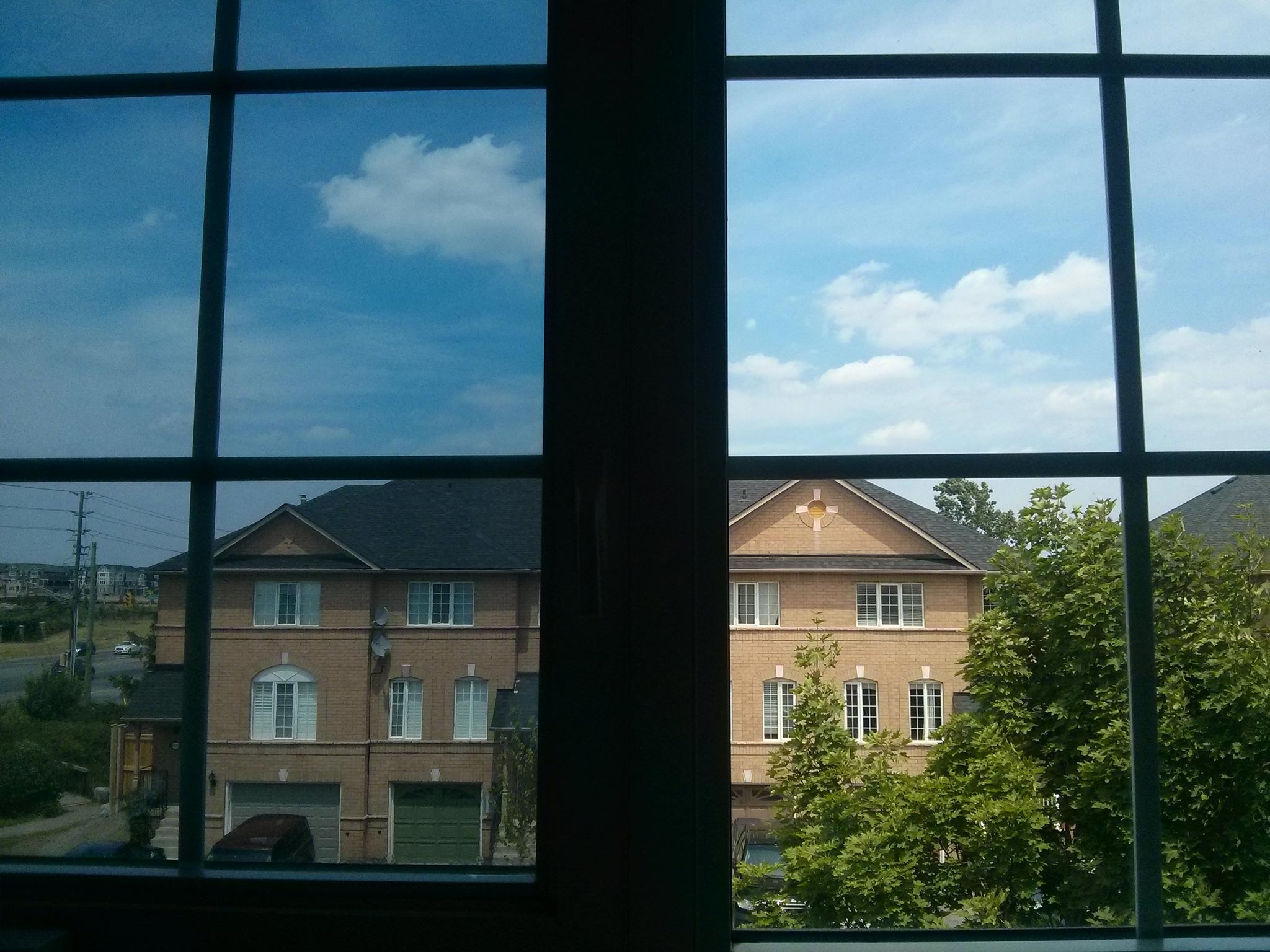Tinting my Bedroom Window
Using reflective tint to block sunlight in the summer

My bedroom faces North-East so I get a few hours of direct sunlight in mornings during the summer, and no direct sunlight in the winter. The sunlight heats up the room considerably and makes for a hot an uncomfortable room to wake up to. Using an infrared thermometer I measured the blinds of the window with direct sunlight to be in the high 30s low 40s Celsius. The room itself would usually be in the high 20s and often low 30s with the door closed, even with the central air conditioning running.
I decided to use window film on the windows to try to reduce the heat from the sun. I decided to get Gila LES461 Energy Saving Platinum film. LES461 is the same as LES361, just 48 inches tall rather than 36 inches. According to Gila's specification, the Energy Saving Platinum had the second highest total solar energy rejected (TSER) of their films at 70%, only beat by the Energy Saving Titanium at 72%. I decided to use Platinum rather than Titanium because I wanted to preserve a good amount of visible light while still rejecting heat, with Platinum having 30% visible light transmission (VLT) compared to Titanium's 23%. Platinum also has a lower (better) emissivity value of 0.44 compared to Titanium's 0.63 which helps both in the summer and winter.
| Item # | Product Name | TSER | VLT | Glare Reduction | UV Rejection | EMIS |
|---|---|---|---|---|---|---|
| LES361 | Energy Saving Platinum | 70 | 30 | 67% | 99% | 0.44 |
| LEG361 | Energy Saving Light | 60 | 40 | 56% | 99% | 0.66 |
| HRT361 | Energy Saving Titanium | 72 | 23 | 74% | 99% | 0.63 |
Application
The film adheres to the window by spraying the back with a liquid and letting it cling onto the window. The home-made liquid is a few drops of baby shampoo mixed in with water and put in a spray bottle. There are commercial liquids sold but the home-made solution works as well. Prior to film application the window itself also needs to be as clean as possible to avoid air bubbles.
- Lay the roll adhesive-side down and measure then cut out the length needed. It should be at least an inch or two longer on each side.
- Stick clear tape to both sides of a corner of the film and use them to peel the film and backing apart. While peeling, have someone spray the adhesive side of the film with the liquid to keep the static from attracting dust.
- Spray the window then place the adhesive side of the film onto the window.
- Spray liquid onto the film and use a squeegee to get most of the liquid out from between the film and the window.
- Use a blade to cut the extra film off the edges, leaving a very small margin of bare glass between the film edge and the window edge.
- Spray and squeegee the film again to get all the water out.
Results
The morning after applying the film I was able to sleep longer and more comfortably with there being less sunlight and heat in the room. The ambient temperature of the room dropped down to the low to mid 20s, matching the rest of the house. The temperature of the blinds in direct sunlight also dropped down to just a few degrees above ambient.
The tint also reduces glare quite a bit. I was able to use my laptop while facing the window without having the outdoor light overwhelm my vision. The sky also looks a darker blue and everything has an overall blue-ish tint to it.
One downside to using the film is that the room is quite dark when there isn't any direct sunlight. It's not as dark as privacy film, but it gives the room a cold gloomy feeling. I rely on indoor lighting earlier in the evening than I normally would without film. Another downside is the reflectivity of the film. The film adds privacy during the day as it reflects light back when looking in, but at night there's more light inside than outside, so instead it reflects a lot of the visible light back in making it hard to see outside, while not providing much, if any privacy.